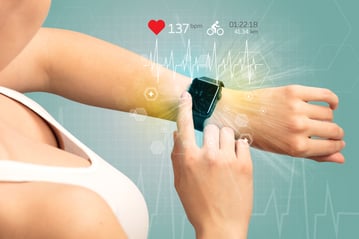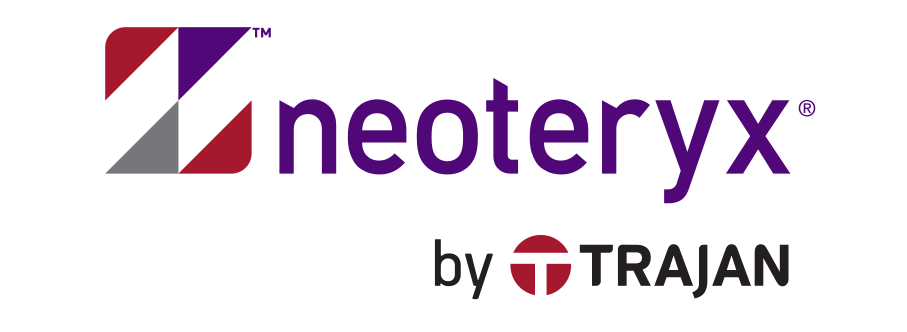Share this
how to lower the cost of clinical research
by Neoteryx Microsampling on Mar 20, 2018 5:00:00 AM
Pharmaceutical companies and contract research organizations (CROs) are looking for ways to work within tight budgets. This leads them to explore new and innovative ways to conduct clinical research and clinical trials that will reduce costs.
Studies show that the top cost drivers in clinical research are:
- Clinical procedure costs (15%-22% of total)
- Administrative staff costs (11%-29% of total)
- Site monitoring costs (9% - 14% of total)

There are numerous ways in which these and other cost drivers can be reduced, but all require new approaches to clinical research, working practices and technology.
Improving Data Capture and Use
Data is critical in clinical research; it is evidence that allows you to move forward, or it sends you back to the previous step.
How data is collected, stored, and analyzed can affect financial and clinical outcomes. Adopting efficient electronic data capture is critical to improving outcomes across the board.
Improving data capture reduces errors and the risk of lost data and, in turn, lowers staff hours by removing the need for retracing steps and redoing tests.
Putting People First
Changing clinical research models to reflect a patient-centric model improves the experience for the patients. It also increases the likelihood of their full participation, significantly lowering the costs associated with study volunteers dropping out before the trial is complete.
The solutions may include adapting how you monitor patients by making use of remote or mobile pathways, such home health nurse visits. New technologies make it even easier to conduct remote clinical trials.
Adapting to New Technologies
 Advances in technology have aided the scientific research and medical sectors, enabling researchers and clinicians to provide portable or wearable technologies to their study subjects and patients.
Advances in technology have aided the scientific research and medical sectors, enabling researchers and clinicians to provide portable or wearable technologies to their study subjects and patients.
These portables and wearables (i.e., smartwatches, wearable heart monitors, etc.) enable remote care or study participation. Because these technologies don't require clinic visits or assistance from a healthcare professional, they help reduce costs in research studies, clinical trials, and health monitoring programs.
Study participants appreciate the convenience and autonomy of using these technologies at home.
Microsampling Technology
 Remote microsampling tools, such as the Mitra® device, enable people to collect their own blood samples and mail them to the laboratory.
Remote microsampling tools, such as the Mitra® device, enable people to collect their own blood samples and mail them to the laboratory.
With a quick fingerstick, people can self-collect blood samples for science and medicine while sitting at the kitchen table.
Microsampling not only allows for fast and easy sampling, it also lowers the costs associated with conducting blood draws in facilities. Additionally, because Mitra microsamples can be stored and mailed and ambient temperatures, you can cut the cost of cold-chain shipping and storage.
Changing How You See Risk
In clinical research, traditionally all data points are monitored. However, a more efficient approach focuses on improving the quality of essential data elements. This prioritization can significantly reduce costs without compromising patient safety or clinical outcomes. By embracing remote data collection methods and leveraging new technologies, researchers can achieve more budget-friendly workflows while maintaining the integrity of the study.
Related Reading: View and download our infographic on Microsampling for Lower Costs in Decentralized Clinical Trials.
Image Credits: Shutterstock, iStock, Trajan, Neoteryx
Share this
- Microsampling (206)
- Research, Remote Research (119)
- Venipuncture Alternative (105)
- Clinical Trials, Clinical Research (83)
- Mitra® Device (73)
- Therapeutic Drug Monitoring, TDM (51)
- Dried Blood Spot, DBS (39)
- Biomonitoring, Health, Wellness (30)
- Infectious Disease, Vaccines, COVID-19 (24)
- Blood Microsampling, Serology (23)
- Omics, Multi-Omics (21)
- Decentralized Clinical Trial (DCT) (20)
- Specimen Collection (18)
- Toxicology, Doping, Drug/Alcohol Monitoring, PEth (17)
- Skin Microsampling, Microbiopsy (14)
- hemaPEN® Device (13)
- Preclinical Research, Animal Studies (12)
- Pharmaceuticals, Drug Development (9)
- Harpera Device (7)
- Industry News, Microsampling News (5)
- Antibodies, MAbs (3)
- Company Press Release, Product Press Release (3)
- Environmental Toxins, Exposures (1)
- July 2025 (1)
- May 2025 (1)
- April 2025 (2)
- December 2024 (2)
- November 2024 (1)
- October 2024 (3)
- September 2024 (1)
- June 2024 (1)
- May 2024 (1)
- April 2024 (4)
- March 2024 (1)
- February 2024 (2)
- January 2024 (4)
- December 2023 (3)
- November 2023 (3)
- October 2023 (3)
- September 2023 (3)
- July 2023 (3)
- June 2023 (2)
- April 2023 (2)
- March 2023 (2)
- February 2023 (2)
- January 2023 (3)
- December 2022 (2)
- November 2022 (3)
- October 2022 (4)
- September 2022 (3)
- August 2022 (5)
- July 2022 (2)
- June 2022 (2)
- May 2022 (4)
- April 2022 (3)
- March 2022 (3)
- February 2022 (4)
- January 2022 (5)
- December 2021 (3)
- November 2021 (5)
- October 2021 (3)
- September 2021 (3)
- August 2021 (4)
- July 2021 (4)
- June 2021 (4)
- May 2021 (4)
- April 2021 (3)
- March 2021 (5)
- February 2021 (4)
- January 2021 (4)
- December 2020 (3)
- November 2020 (5)
- October 2020 (4)
- September 2020 (3)
- August 2020 (3)
- July 2020 (6)
- June 2020 (4)
- May 2020 (4)
- April 2020 (3)
- March 2020 (6)
- February 2020 (3)
- January 2020 (4)
- December 2019 (5)
- November 2019 (4)
- October 2019 (2)
- September 2019 (4)
- August 2019 (4)
- July 2019 (3)
- June 2019 (7)
- May 2019 (6)
- April 2019 (5)
- March 2019 (6)
- February 2019 (5)
- January 2019 (8)
- December 2018 (3)
- November 2018 (4)
- October 2018 (7)
- September 2018 (6)
- August 2018 (5)
- July 2018 (8)
- June 2018 (6)
- May 2018 (5)
- April 2018 (6)
- March 2018 (4)
- February 2018 (6)
- January 2018 (4)
- December 2017 (2)
- November 2017 (3)
- October 2017 (2)
- September 2017 (4)
- August 2017 (2)
- July 2017 (4)
- June 2017 (5)
- May 2017 (6)
- April 2017 (6)
- March 2017 (5)
- February 2017 (4)
- January 2017 (1)
- July 2016 (3)
- May 2016 (1)
- April 2016 (2)



Comments (1)